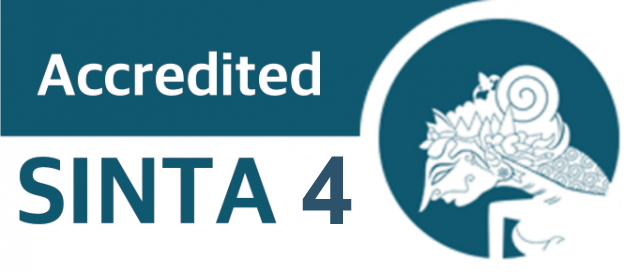Analysis of Residual Free Chlorine Content in Rinjani Waterpark Swimming Pool Water, East Lombok District
DOI:
10.29303/jpm.v20i1.8182Published:
2025-01-29Issue:
Vol. 20 No. 1 (2025)Keywords:
Argentometry Method; Free Residual Chlorine; Swimming Pool WaterArticles
Downloads
How to Cite
Downloads
Metrics
Abstract
Water is the most essential component in daily life. One of its uses is as water in swimming pools. A swimming pool is a public place and facility in the form of a pool building used for swimming. The water used in swimming pools must have a quality that complies with the quality standards determined for the water. One of the parameters required in PERMENKES Nomor 2 Tahun 2023 is the remaining free chlorine. This research aims to analyze the residual free chlorine content in Rinjani Waterpark swimming pool water, where it is known from the results of preliminary studies that Rinjani Waterpark uses chlorine as a disinfectant to kill bacteria in the water and purify the pool water. There were several complaints from swimming pool visitors, such as eye irritation and itchy skin after swimming in that swimming pool, so further analysis was needed. The type of research used in this research is descriptive qualitative. The samples used in this research were 4 samples. The sampling technique uses total sampling. Testing was carried out at the STTL Mataram laboratory to see the free chlorine content in water samples using Mohr's Argentometry method. After conducting the research, the results were obtained that the samples that did not meet the requirements were samples with codes P1 M=2.3 mg/L, P3 M=1.77 mg/L, P4 M=2.3 mg/L, and P3 A = 0 mg/L. Visitors who want to visit the Rinjani Waterpark swimming pool are expected to use personal protective equipment (PPE) such as swimming goggles to avoid the impact of chlorine levels that are too high in the water. Swimming pool managers should pay attention to the chlorine dosage in the water so that it does not cause side effects to visitors.
References
Kementerian Kesehatan Republik Indonesia, “PERATURAN MENTERI KESEHATAN Nomor 2 Tahun 2023 Tentang Peraturan Pelaksanaan Peraturan Pemerintah Nomor 66 Tahun 2014. Tentang Kesehatan Lingkungan,” Januari 2023.
A. Narlan, D.T. Juniar, A. Priana, and D. Setiawan, “Edukasi Budaya Hidup Sehat Berbasis Hasil Penelitian Di Masa Pandemi,” J-ABDI: Jurnal Pengabdian kepada Masyarakat, vol. 1, no. 7, December. Dec. 2021, doi: 10.53625/jabdi.v1i7.676.
A. I., Ramadhan, and N. J A R. Ratni, “Analisa Keberadaan Sisa Klor Bebas Pada Jaringan Distribusi PDAM Kabupaten Bantul Dengan EPANET 2.0,” JURNAL ENVIROUS, vol. 1, no.2 September, Sep. 2021, doi: 10.33005/envirous.v1i2.35.
N. Fatimah, D. R. A. Paramita, D. Rashati, and H. B. H. F. Siddiq, “Analisa Kadar Sisa Klor Bebas Menggunakan Metode Mohr Pada Kolam Renang Di Wilayah Kabupaten Jember,” Jurnal Ilmiah Farmasi, vol. 7, no. 1 July, Jul. 2024, doi: 10.53864/jifakfar.v7i1.163.
B. Josopandojo, and A. Purnomo, “Studi Kemampuan Instalasi Pengolahan Air Untuk Memimalisi Trihalometana (Studi Kasus IPA Siwalapanji Kabupaten Sidoarjo),” Jurnal Teknik ITS, vol. 9 no. 2 January, Jan. 2021, doi: 10.12962/j23373539.v9i2. 53648.
A. S. Nafisa, and S. Nurhalimah, “Penerapan Sanitasi dan Higiene pada Proses Produksi Air Minum dalam Kemasan (AMDK),” Jurnal Karimah Tauhid Universitas Djuanda, vol 3, no 10 October, Oct. 2024, doi: 10.30997/ karimahtauhid.v3i10.15486.
Purhandono., and K. Mulyono, “Swimming Pool Water Quality Control with Statistical Process Control Approach,” Jenius: Jurnal Terapan Teknik Industri, vol 3, no. 2 April, Apr. 2022, doi: 10.47191/ijmra/v7-i04-09.
Badan Standarisasi Nasional, “SNI 6989.19.2009. Air dan Air Limbah – Bagian 19, Cara Uji Klorida (Cl) dengan Metode Argentometri”
V.D.H. Putri, and A.P. Purnamasari, “Penetapan Kadar Klorida Dalam Air Danau Universitas Negeri Surabaya Secara Argentometri,” INDONESIAN CHEMISTRY AND APPLICATION, vol. 5, no. 1 September, Sept. 2023, doi: 10.26740/icaj.v5i1.23213.
C. E. Hidayat, “Analisis Kadar Residu Klorin pada Air Kolam Renang Umum di Kota Kupang,” Doctoral Dissertation, Poltekkes Kemenkes Kupang. July. 2019.
Harmita, Penetapan Kadar Bahan Baku Obat Dan Sediaan Farmasi. Penerbit Buku Kedokteran ECG. Jakarta. 2017.
R. Asrina, and J. Anganria, J, “Analisis Kualitatif Klorin (Cl2) Pada Beras Putih Yang Beredar Di Pasar Tradisional Daya Kota Makassar,” Jurnal Farmasi Sandi Karsa, vol. V, no. 1 April, Apr. 2019, doi: 10.36060/jfs.v5i1.32.
P. N. K. Sitorus, A. Azzahra, D. R. Lubis, K. Z. Gulo, P. Adila, and T. A. Siregar, “Keberadaan Esherichia coli Pada Berbagai Jenis Air,” Algoritma: Jurnal Matematika, Ilmu pengetahuan Alam, Kebumian dan Angkasa, vol. 2 no. 5 September, Sept. 2024, doi: 10.62383/algoritma.v2i5.116
M. Tangkelangi, A. Rantesalu, and W. R. Bire, (2022). “Kadar Sisa Klorin Bebas Pada Air Kolam Renang Umum Di Kota Kupang Metode Metode N,N-Dietil-Pfenilendiamin (DPD),” in Prosiding Seminar Nasional MIPA UNIPA, September. 2022 pp. 76-80. ISSN 2654-7724
W. Aditama, Darmiati, Arnidasari, A. Samosir, Nuraida, Zulfikar, and Bukhar, “Pemantuan Dan Pemeriksaan Kualitas Air Dalam Kolam Pemandian di Wahana Impian Kuta Malaka, Aceh Besar,” Jurnal Geulayang: Jurnal Pengabdian Kepada Masyarakat Jurusan Kesehatan Lingkungan Poltekkes Aceh, vol. 1 no. 3 Juny, Jun. 2024, doi: 10.30867/geulayang.v1i3.
E. Kursani, B. Yulianto, and R. Aqrianti, “Analysis of Chorine and pH Water Levels In Swimming Pool in Pekanbaru City,” Jurnal kesehatan Al-Irsyad, vol 12, no 2 September, Sept. 2019, doi: 10.36760/jka.v12i2.
B. Wicaksono, Budiyono, and O. Setiani, “Faktor Risiko Kejadian Iritasi Mata Pada Pengguna Kolam Renang X Di Kota Semarang,” JURNAL KESEHATAN MASYARAKAT FACULTY OF PUBLIC HEALTH UNIVERSITAS DIPONERGORO, vol 4, no 4 November, Nov. 2016, doi: 10.14710/jkm.v4i4.14377.
N. Karimah, Rusmiati, I. Thohari, and Suprijandani, “Pengaruh Kadar Sisa Klor Bebas terhadap Keluhan Iritasi Mata pada Pengunjung Kolam Renang X Kota Surabaya,” Jurnal Kesehatan UPPM Poltekkes Kemenkes Ternate, vol 17, no 2 November, Nov. 2024, doi: 10.32763/btz2zv26.
B. Z. Ibrahim, S. Santosa, and R. A. Wahjoedi, “PERBANDINGAN METODE GRAVIMETRI DAN DISTILASI UNTUK ANALISIS KAPORIT POWDER 60% PADA INDUSTRI PENGHASIL KAPORIT.,” DISTILAT: Jurnal Teknologi Separasi, vol 10, no 3 September, Sept. 2024, doi: 10.33795/distilat.v10i3.6219
D. A. Lumbantobing, M. H. P. Hutagalung, and S. Erawati, S, “Pengaruh Kadar pH Air Kolam Renang Terhadap Kesehatan Rongga Mulut Atlet Renang”. Prima Journal of Oral and Dental Sciences, vol 5, no 2 Oktober, Okt. 2022, doi: 10.34012/primajods.v5i2.2822.
D. Herawati, and A. Yuntarso, “Penentuan Dosis Kaporit Sebagai Desinfektan Dalam Menyisihkan Konsentrasi Ammonium Pada Air Kolam Renang,” Jurnal SainHealth Faculty of Health Sciences, Universitas Maarif Hasyim Latif Sidoarjo, vol 1, no 2 September, Sept. 2017, doi: 10.51804/jsh.v1i2.106.66-74.
Author Biographies
Wahyudin Wahyudin, Environmental Engineering, Mataram Environmental Engineering College
Enida Fatmalia, 2Environmental Health, Mataram Environmental Engineering College, Mataram
Dosen Tetap D3 Kesehatan Lingkungan
Dini Yuliansari, Environmental Health, Mataram Environmental Engineering College, Mataram
License
Copyright (c) 2025 Wahyudin Wahyudin, Enida Fatmalia, Dini Yuliansari

This work is licensed under a Creative Commons Attribution 4.0 International License.
The following terms apply to authors who publish in this journal:
1. Authors retain copyright and grant the journal first publication rights, with the work simultaneously licensed under a Creative Commons Attribution License 4.0 International License (CC-BY License) that allows others to share the work with an acknowledgment of the work's authorship and first publication in this journal.
2. Authors may enter into separate, additional contractual arrangements for the non-exclusive distribution of the journal's published version of the work (e.g., posting it to an institutional repository or publishing it in a book), acknowledging its initial publication in this journal.
3. Before and during the submission process, authors are permitted and encouraged to post their work online (e.g., in institutional repositories or on their website), as this can lead to productive exchanges as well as earlier and greater citation of published work (See The Effect of Open Access).











